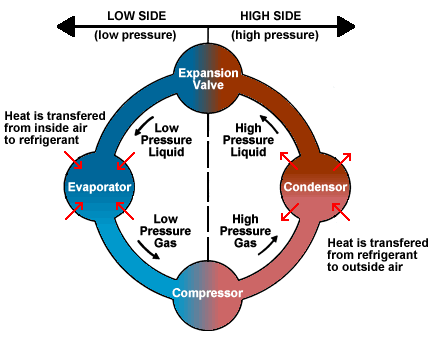Air Conditioners Prices in Pakistan
Haier, Dawlance, L.g, Orient, <itsubishi, Pel, Sumsung, Gree, Singer
Haier ACDawlance ACLG ACOrient ACMitsubishi ACPEL AC
Samsung ACGree ACSinger AC...
For the first time we have brought you a tremendous.High power water cooled water cooler that is.This machine is cooled to 6 liters of water in one minute
Tuesday, 4 February 2014
Thursday, 30 January 2014
Wednesday, 22 January 2014
Friday, 17 January 2014
Basic Refrigeration Cycle

Basic Refrigeration Cycle
Principles of Refrigeration
Liquids absorb heat when changed from liquid to gas
Gases give off heat when changed from gas to liquid.
For an air conditioning system to operate with economy, the refrigerant must be used repeatedly. For this reason, all air conditioners...
Thursday, 16 January 2014
Refrigerant
Physical properties of some common refrigerants are indicated in the table below:
RefrigerantNo.NameMolecular MassBoiling pointat atmospheric pressure14.7 psia, 1 bar abs(oF)Freezing Pointat atmospheric pressure14.7 psia, 1 bar abs(oF)Critical Point
Temperature(oF)Pressure(psia)Specific Volume(Cu.Ft./lb.)
R-10Carbontetrachloride153.8170.2
R-11Trichlorofluoromethane1)137.3774.9-1683886400.0289
R-12Dichlorodifluoromethane2)120.91-21.8-2522345970.0287
R-13Monochlorotrifluoromethane104.46-114.6-294845610.0277
R-13B1Bromotrifluoromethane148.91-72-2701535750.0215
R-14Tetrafluoromethane...



